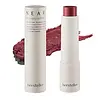What's inside
What's inside
 Key Ingredients
Key Ingredients

 Benefits
Benefits

 Concerns
Concerns

 Ingredients Side-by-side
Ingredients Side-by-side

Hydrogenated Polyisobutene
EmollientPhytosteryl/Isostearyl/Cetyl/Stearyl/Behenyl Dimer Dilinoleate
Skin ConditioningPolyisobutene
Diisostearyl Malate
EmollientOctyldodecyl Stearoyl Stearate
EmollientPolyglyceryl-10 Decaisostearate
EmollientSynthetic Wax
AbrasiveAluminum Starch Octenylsuccinate
AbsorbentOleic/Linoleic/Linolenic Polyglycerides
EmollientEthylene/Propylene/Styrene Copolymer
Sucrose Tetrastearate Triacetate
EmollientCamellia Japonica Seed Oil
EmollientButyrospermum Parkii Butter
Skin ConditioningEuphorbia Cerifera Wax
C30-50 Alcohols
EmulsifyingCandelilla Wax Esters
Disteardimonium Hectorite
StabilisingTheobroma Cacao Seed Butter
EmollientEthylene/Propylene Copolymer
AbrasiveEucalyptus Globulus Leaf Oil
PerfumingPolyethylene
AbrasiveCopernicia Cerifera Wax
Limonene
PerfumingButylene/Ethylene/Styrene Copolymer
Glycerin
HumectantPentaerythrityl Tetra-Di-T-Butyl Hydroxyhydrocinnamate
AntioxidantCeramide NP
Skin ConditioningTocopherol
AntioxidantPhytosphingosine
Skin ConditioningHyaluronic Acid
HumectantHydrogenated Lecithin
EmulsifyingHydrogenated Polyisobutene, Phytosteryl/Isostearyl/Cetyl/Stearyl/Behenyl Dimer Dilinoleate, Polyisobutene, Diisostearyl Malate, Octyldodecyl Stearoyl Stearate, Polyglyceryl-10 Decaisostearate, Synthetic Wax, Aluminum Starch Octenylsuccinate, Oleic/Linoleic/Linolenic Polyglycerides, Ethylene/Propylene/Styrene Copolymer, Sucrose Tetrastearate Triacetate, Camellia Japonica Seed Oil, Butyrospermum Parkii Butter, Euphorbia Cerifera Wax, C30-50 Alcohols, Candelilla Wax Esters, Disteardimonium Hectorite, Theobroma Cacao Seed Butter, Ethylene/Propylene Copolymer, Eucalyptus Globulus Leaf Oil, Polyethylene, Copernicia Cerifera Wax, Limonene, Butylene/Ethylene/Styrene Copolymer, Glycerin, Pentaerythrityl Tetra-Di-T-Butyl Hydroxyhydrocinnamate, Ceramide NP, Tocopherol, Phytosphingosine, Hyaluronic Acid, Hydrogenated Lecithin
Butyrospermum Parkii Butter
Skin ConditioningHelianthus Annuus Seed Oil
EmollientPrunus Amygdalus Dulcis Oil
Skin ConditioningMacadamia Integrifolia Seed Oil
Skin ConditioningHelianthus Annuus Seed Wax
Skin ConditioningRicinus Communis Seed Oil
MaskingHydrogenated Castor Oil Dimer Dilinoleate
Skin ConditioningPhytosteryl/Isostearyl/Cetyl/Stearyl/Behenyl Dimer Dilinoleate
Skin ConditioningEuphorbia Cerifera Wax
Trilaurin
Skin ConditioningTribehenin
EmollientOryza Sativa Bran Wax
Skin ConditioningAstrocaryum Murumuru Seed Butter
EmollientTheobroma Grandiflorum Seed Butter
Skin ConditioningArgania Spinosa Kernel Oil
EmollientCeramide NP
Skin ConditioningAvena Sativa Kernel Oil
Skin ConditioningPersea Gratissima Oil
Skin ConditioningSimmondsia Chinensis Seed Oil
EmollientMalt Extract
Skin ProtectingAvena Sativa Kernel Extract
AbrasiveOryza Sativa Extract
AbsorbentTocopherol
AntioxidantWater
Skin ConditioningButylene Glycol
Humectant1,2-Hexanediol
Skin ConditioningPolyglyceryl-2 Diisostearate
EmulsifyingSucrose Tetrastearate Triacetate
EmollientPolyhydroxystearic Acid
EmulsifyingDiisostearyl Malate
EmollientEthylhexyl Palmitate
EmollientIsopropyl Myristate
EmollientIsostearic Acid
CleansingPolyglyceryl-2 Triisostearate
EmulsifyingPolyglyceryl-3 Polyricinoleate
EmulsifyingCaprylyl Glycol
EmollientLecithin
EmollientEthylhexylglycerin
Skin ConditioningCI 77491
Cosmetic ColorantCI 77891
Cosmetic ColorantCI 77492
Cosmetic ColorantCI 77499
Cosmetic ColorantCI 15850
Cosmetic ColorantCI 42090
Cosmetic ColorantParfum
MaskingButyrospermum Parkii Butter, Helianthus Annuus Seed Oil, Prunus Amygdalus Dulcis Oil, Macadamia Integrifolia Seed Oil, Helianthus Annuus Seed Wax, Ricinus Communis Seed Oil, Hydrogenated Castor Oil Dimer Dilinoleate, Phytosteryl/Isostearyl/Cetyl/Stearyl/Behenyl Dimer Dilinoleate, Euphorbia Cerifera Wax, Trilaurin, Tribehenin, Oryza Sativa Bran Wax, Astrocaryum Murumuru Seed Butter, Theobroma Grandiflorum Seed Butter, Argania Spinosa Kernel Oil, Ceramide NP, Avena Sativa Kernel Oil, Persea Gratissima Oil, Simmondsia Chinensis Seed Oil, Malt Extract, Avena Sativa Kernel Extract, Oryza Sativa Extract, Tocopherol, Water, Butylene Glycol, 1,2-Hexanediol, Polyglyceryl-2 Diisostearate, Sucrose Tetrastearate Triacetate, Polyhydroxystearic Acid, Diisostearyl Malate, Ethylhexyl Palmitate, Isopropyl Myristate, Isostearic Acid, Polyglyceryl-2 Triisostearate, Polyglyceryl-3 Polyricinoleate, Caprylyl Glycol, Lecithin, Ethylhexylglycerin, CI 77491, CI 77891, CI 77492, CI 77499, CI 15850, CI 42090, Parfum
Ingredients Explained
These ingredients are found in both products.
Ingredients higher up in an ingredient list are typically present in a larger amount.
This ingredient is also known as shea butter. It is an effective skin hydrator and emollient.
Emollients help soothe and soften your skin. It does this by creating a protective film on your skin. This barrier helps trap moisture and keeps your skin hydrated. Emollients may be effective at treating dry or itchy skin.
Shea butter is rich in antioxidants. Antioxidants help fight free-radicals, or molecules that may harm the body. It is also full of fatty acids including stearic acid and linoleic acid. These acids help replenish the skin and keep skin moisturized.
While Shea Butter has an SPF rating of about 3-4, it is not a sunscreen replacement.
Shea butter may not be fungal acne safe. We recommend speaking with a professional if you have any concerns.
Learn more about Butyrospermum Parkii ButterCeramide NP is a type of ceramide and formally known as ceramide 3.
Ceramides are intercellular lipids naturally found in our skin that bonds dead skin cells together to create a barrier. They are known for their ability to hold water and thus are a great ingredient for dry skin.
Ceramides are an important building block for our skin barrier. A stronger barrier helps the skin look more firm and hydrated. By bolstering the skin ceramides act as a barrier against irritating ingredients. This can help with inflammation as well.
If you would like to eat ceramides, sweet potatoes contain a small amount.
Read more about other common types of ceramides here:
Ceramide AP
Ceramide EOP
Diisostearyl Malate is an emollient and most often used in lip products. It comes from isostearyl alcohol, a fatty acid, and malic acid, an AHA.
As an emollient, Diisostearyl Malate helps create a thin film on your skin to trap moisture in. This helps keep your skin soft and smooth.
We don't have a description for Phytosteryl/Isostearyl/Cetyl/Stearyl/Behenyl Dimer Dilinoleate yet.
Sucrose Tetrastearate Triacetate isn't fungal acne safe.
Tocopherol (also known as Vitamin E) is a common antioxidant used to help protect the skin from free-radicals and strengthen the skin barrier. It's also fat soluble - this means our skin is great at absorbing it.
Vitamin E also helps keep your natural skin lipids healthy. Your lipid skin barrier naturally consists of lipids, ceramides, and fatty acids. Vitamin E offers extra protection for your skin’s lipid barrier, keeping your skin healthy and nourished.
Another benefit is a bit of UV protection. Vitamin E helps reduce the damage caused by UVB rays. (It should not replace your sunscreen). Combining it with Vitamin C can decrease sunburned cells and hyperpigmentation after UV exposure.
You might have noticed Vitamin E + C often paired together. This is because it is great at stabilizing Vitamin C. Using the two together helps increase the effectiveness of both ingredients.
There are often claims that Vitamin E can reduce/prevent scarring, but these claims haven't been confirmed by scientific research.
Learn more about TocopherolEuphorbia Cerifera wax comes from a shrub in Northern Mexico. It is used to stabilize formulations and has emollient properties.
Emollients form a thin layer on top of skin to prevent water from evaporating, keeping skin and lips hydrated.
According to a manufacturer, this wax can range from a yellow/brown color to translucent.
Learn more about Euphorbia Cerifera Wax